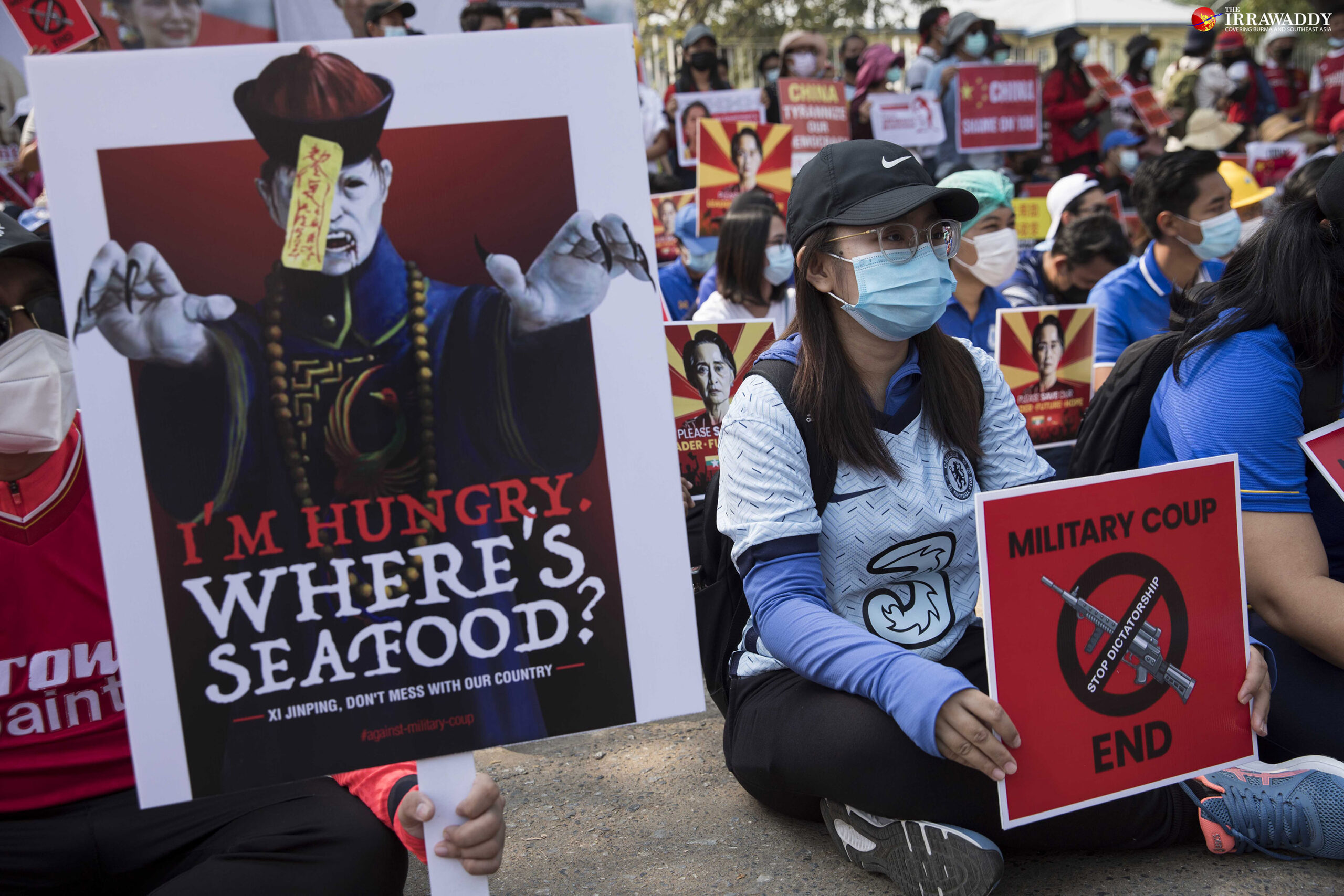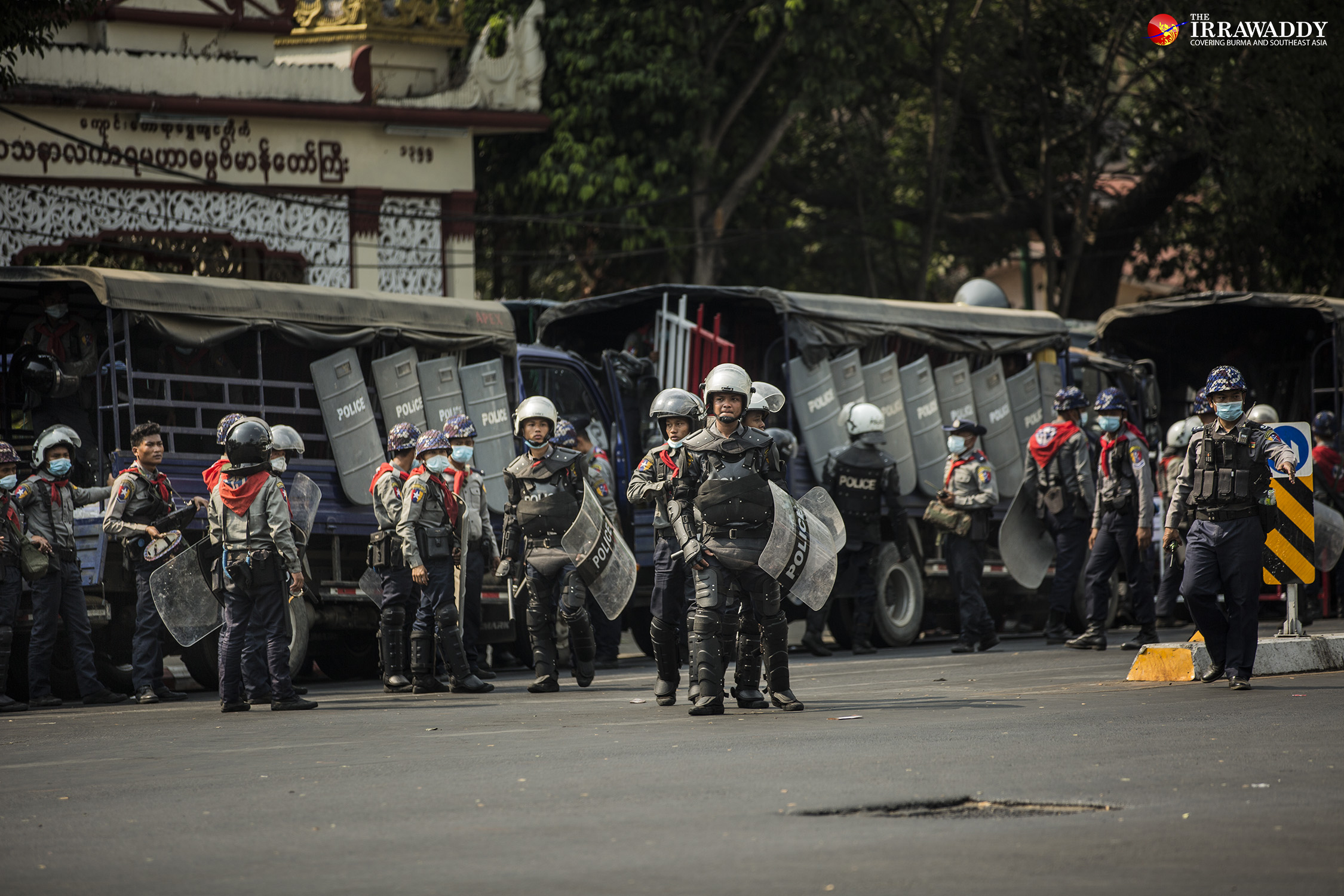YANGON—Undeterred by security forces’ recent deadly crackdowns, millions of Myanmar people joined a nationwide general strike against their country’s military junta on Monday, intensifying their opposition to the men in uniform who overthrew the elected civilian government more than three weeks ago.
Myanmar woke up on Monday to a nation in which many businesses, from markets to restaurants to roadside vendors, were shut down—and would remain so for the whole day—as people went out to join the strike, which has become known as the “22222 [Five Twos] Popular Uprising”, as it was held on Feb. 22, 2021.

The Southeast Asian country has seen daily nationwide protests against the regime for more than two weeks, since its military staged a coup on Feb. 1. Monday’s demonstrations appeared to be the biggest yet, reflecting growing public outrage over the regime’s recent willingness to use deadly force against protesters. It was the second nationwide popular uprising in Myanmar’s recent history, after the one on Aug. 8, 1988 (known as the “Four Eights” uprising), in which millions of people also took to the streets—in that case to defy the then Socialist regime.
In the country’s biggest city, Yangon, protests were in full swing by 9 in the morning at the downtown flashpoint of Sule Pagoda Road. With more people coming in throughout the morning and afternoon, the downtown section of the road became a sea of people shouting slogans against the military dictatorship. A few miles to the north, Hledan Junction was also flooded with tens of thousands of people—as it has been throughout the past two weeks of protest. And in the city’s other main protest hub, Myaynigone, a band of housewives stood out among their fellow demonstrators, as they staged a sit-in while banging on cooking utensils. Their determination was clearly expressed on a large sign laid in front of them: “We won’t go back into the kitchen till the dictator fails.” (Pray for their husbands, please!)
Similar scenes were reported in cities and towns across the country.

Mandalay, Myanmar’s second-largest city—and the hardest hit by security forces’ recent crackdowns—came to a standstill on Monday, with nearly every resident seemingly taking to the streets.
Based on his experience in 1988, one of the city’s most prominent writers, Hsu Nget, assessed Monday’s protest as far larger than the one that took place on Aug. 8 of that year .
“The whole city is out in the streets. Only old people have been left behind at home to take care of their properties,” he said.
Though the protests across the country were peaceful, as they have been on previous days, Monday’s general strike was not without incident.
In the Union government seat of Naypyitaw, police and soldiers heavy-handedly arrested more than 20 people in Pyinmana in an attempt to prevent protesters from entering the capital.
Police also cordoned off the vicinity of the US Embassy in Yangon. Until Sunday, the leafy avenue had been the protesters’ location of choice for sit-ins calling for international assistance to end the military dictatorship in their country.
However, on Monday, police in riot gear tried to charge the protesters. Maintaining their non-confrontational approach, the protesters retreated and regrouped elsewhere. The scene replayed itself in a separate incident near the Shwedagon Pagoda, where police confronted a protest column marching downtown. When the protesters retreated, commuters nearby placed their cars in the middle of the road, blocking the way and preventing security forces from moving forward.
Unlike a few days ago, protesters in downtown Yangon didn’t encounter any intervention by police on Monday. While the Sule Junction was completely occupied by protesters, the portico of the nearby—and currently shuttered due to COVID-19—Sule Shangri-La Hotel was converted into a sit-in camp.

Standing amid the protesters on the sidewalk of nearby Sule Square, Ma Nilar Thein of the 88 Generation of Peace and Open Society said the ongoing protest against the junta was quite different from the ’88 Uprising, in which she took part 33 years ago.
“The young people today seem to have taken lessons from what we faced,” she said, referring to the current protesters’ non-confrontational approaches. She and other members of the society took leading roles back then.
Recalling those of her peers who didn’t survive the deadly crackdowns on student protesters in 1988, she said, “I couldn’t bear to lose these young faces here. Non-confrontation is best for now.”

Monday marked exactly two weeks since May Thu joined the anti-military regime protest in downtown Yangon. Mindful of the recent deadly shootings of protesters, the 29-year-old and her friends jotted down their own names, emergency contact numbers and blood types on their forearms in permanent ink before joining Monday’s protest.
“If something bad happens to us, the information could be helpful to some extent,” she said, acknowledging the possibility that she herself could become a victim should any crackdown occur.
Does it mean she has no fear?
“No. What I fear is that the protest against this regime will fail. I am more afraid of living under their rule,” she said.
The Irrawaddy’s San Yamin Aung and Nan Lwin contributed to this story.
You may also like these stories:
China Warns West Over Myanmar Coup, ‘Interference’
More Than 20 People Arrested as Security Forces Break Up ‘22222’ Protest in Myanmar’s Capital

















